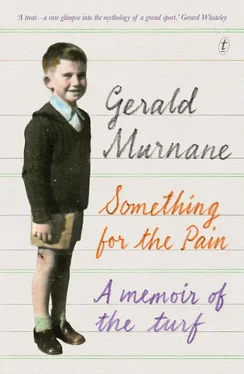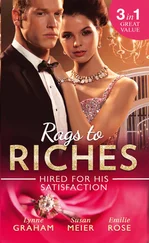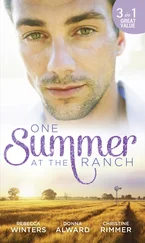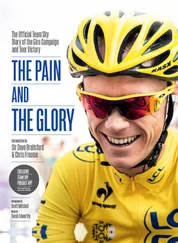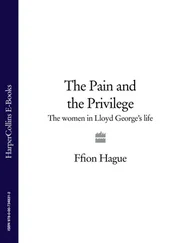One day, I must have tried to explain to him that I had few opportunities to meet girls; that I had once gone alone on a Sunday picnic organised by the youth groups of my parish but had had to consort all day with solitary males like myself, while the young women were guarded by their boyfriends. Instead of answering me, he went into a sort of reverie, brought on, I supposed, by my mention of Catholic youth groups. He leaned back in his chair and said, more to himself than to me, that he had sometimes courted even Children of Mary, and his satisfaction seemed so genuine that I found myself believing his claim, scandalous though it seemed to me. (The Children of Mary was the title of a Catholic sodality, long since disappeared, whose members, all of them older girls or young women, attended mass together on a designated Sunday each month. In the great days of the sodality, a parish church might be more than half-filled with devout young female persons. I was intimidated even by the thought of such a gathering and kept well away from the church whenever the young females were assembled there but sometimes, on my way to a later mass, I saw a single Child of Mary or a small group going home through the quiet streets, each wearing the regalia of the sodality: a blue hood that reached below the waist and was topped by a sort of white veil, or so I seem to recall — I never got close enough to observe the details.)
When Martin Dillon wasn’t trying to convert me to his way of life, we spent much of our time talking about racing. He went to every Saturday meeting and even took a day of his annual leave sometimes when he wanted to back a particular horse at a weekday meeting. On many a day while we were side by side at our desks, I would hear him phoning a bet to his SP bookmaker, whose name I still recall: Charlie Cotton. Martin knew a few small-time trainers and hard-bitten old stable hands and was sometimes tipped a winner. I resented his thinking I was no more than a mug punter and told him sometimes that my father knew some smart men around Flemington.
My father’s SP bookmaker at that time was a man named Hughie Thomas. Hughie was no minnow as a bookmaker, and my father was prepared to phone to Hughie, five minutes before Lickity’s race, a sizeable bet for Teddy and himself. On the evening before the race, my father gave me ten pounds (rather more than five hundred dollars in today’s currency) and asked me to have Martin Dillon put the money on Lickity with his bookmaker. I was to pretend to Martin that an eccentric aunt of mine, who knew nothing about racing, had been tipped that the horse had a winning chance and had asked me to back it for her. I was not to hand over the money until ten minutes before the start of the race, as though the matter had slipped my mind until then.
All went as planned. Martin phoned my bet to Charlie Cotton, but he, Martin, reported to me with some surprise Charlie’s telling him, when Lickity’s name was mentioned, that a punter, only minutes before, had asked to have a huge amount on the horse. Charlie had had to limit the punter to a fraction of what he wanted to bet. When I heard this, I was surprised that Martin had not decided to have a small bet on Lickity for himself. Did he still believe my story about my aunt? Had it not yet occurred to him that the junior in the Bullion Office might, for once, be privy to valuable knowledge?
One last detail needs to be mentioned. The horses that Teddy and his men backed were mostly at short odds. The amount that they bet was such that a winner at three-to-one would give them an excellent result. Given that Teddy had told my father Lickity could not be beaten, we — my father and I — expected the horse to start at about two-to-one. The race was a good-quality maiden race at Warrnambool, and Lickity would have been about three-to-one in early betting. However, he was friendless in the ring, to use a racing expression. Not only did no big bettors want to back Lickity, but Teddy himself was at the meeting and made a great show of backing Lickity’s nearest rival with several hundred pounds in cash. The laws of supply and demand operate unfailingly in the betting ring. Since no one seemed to want to back Lickity on course at Warrnambool, the bookmakers there lengthened his odds, hoping to tempt punters.
Meanwhile, all over Victoria and New South Wales, punters in the know were waiting to bet as much as their bookmakers would allow them on Lickity and, if the horse won, the bets were going to be paid at the odds being offered at Warrnambool when the race began.
Martin Dillon was always able to hear a broadcast of a weekday race if he was interested. A group of dedicated punters had a radio hidden somewhere in the Coining Hall or the Melting Department of the Mint. After he had backed Lickity for me, he went off to hear the race. I, being the boy around the place, stayed at my desk. When Martin came back, he seemed unusually thoughtful. He told me that my aunt must have got her tip from a reliable source, given that Lickity had led all the way and had won by four lengths.
A little later, out of curiosity, he phoned Charlie Cotton to see what the horse’s odds had been. (So well organised were off-course bookmakers that their agents or spies on course could tell them the starting prices within minutes after each race.) I watched Martin while he asked Charlie what Lickity’s odds had been. Martin would have expected, as I did, that the horse had started at around two- or three-to-one. He went on listening to Charlie the bookmaker for a minute or so, and I could see that even such a hardened old punter as Martin was hearing something that surprised him. He put the phone down and swung his chair around so that he faced me. He told me first that Lickity had started at five-to-one. Then he told me that Charlie had heard already on the grapevine that all the big SP bookmakers in Melbourne and Sydney had been taken by surprise and faced huge payouts. The plunge on Lickity had been one of the biggest and best-planned for years. And then I intercepted the first of the looks that I mentioned earlier.
I worked with Martin Dillon for only a few weeks after Lickity’s win. In the new year, I left the Mint to begin a course at a primary teachers’ college. During my last weeks with him, Martin seemed to have decided that I was not quite the girl-less, gormless teenager that he had taken me for. He even grinned at me sometimes and asked me to pass on to him any further tips that my aunt received.
Lickity had a short spell after his lucrative win and did not race again until the autumn of 1958. His next start was to be at Bendigo, in a stronger field than he had beaten at Warrnambool. This time there would be no huge plunge, but Teddy had told my father to back the horse with confidence. I told my father I could easily take a day’s sick leave from the teachers’ college, and he entrusted me with twenty pounds. My father sometimes exhibited a mild paranoia in racing matters. He warned me to stay well away from the rails bookmakers where Teddy and his men would be betting. Teddy had not set eyes on me since I was a boy of ten, but my father was afraid that Teddy might recognise me and might be annoyed if I seemed to be putting mine and my father’s money on before the smart men had got theirs on.
I travelled to Bendigo on one of the buses that for many years took racegoers to country meetings from opposite Ball and Welch’s store in Flinders Street. Most of the passengers were elderly, but the man who sat beside me and began a conversation was in his late twenties. He was good company, and we talked for most of the trip. He was an accountant from Wollongong, a bachelor taking his annual holidays alone but on public transport in order to meet people. He was going to the races but was going to stay in Bendigo for a few days to see the sights, as he put it. I told him that I had lived in Bendigo as a small boy, which was true, and that I was hoping to meet up at the races with family and friends from former times. This was not at all true. I had no relatives in Bendigo and had lost all contact with former friends. The only persons who might have been pleased to meet me at the races were the Bourke brothers. They were licensed bookmakers and also SP men. When my father had taken us away in haste from Bendigo ten years before, he had owed the Bourke brothers a huge amount. Perhaps they could have taken me hostage and sent a ransom note to my father. I am only joking — but when I did see one of the Bourke men in the distance later that day, I turned away at once. I could not have dared to look him in the eye.
Читать дальше
